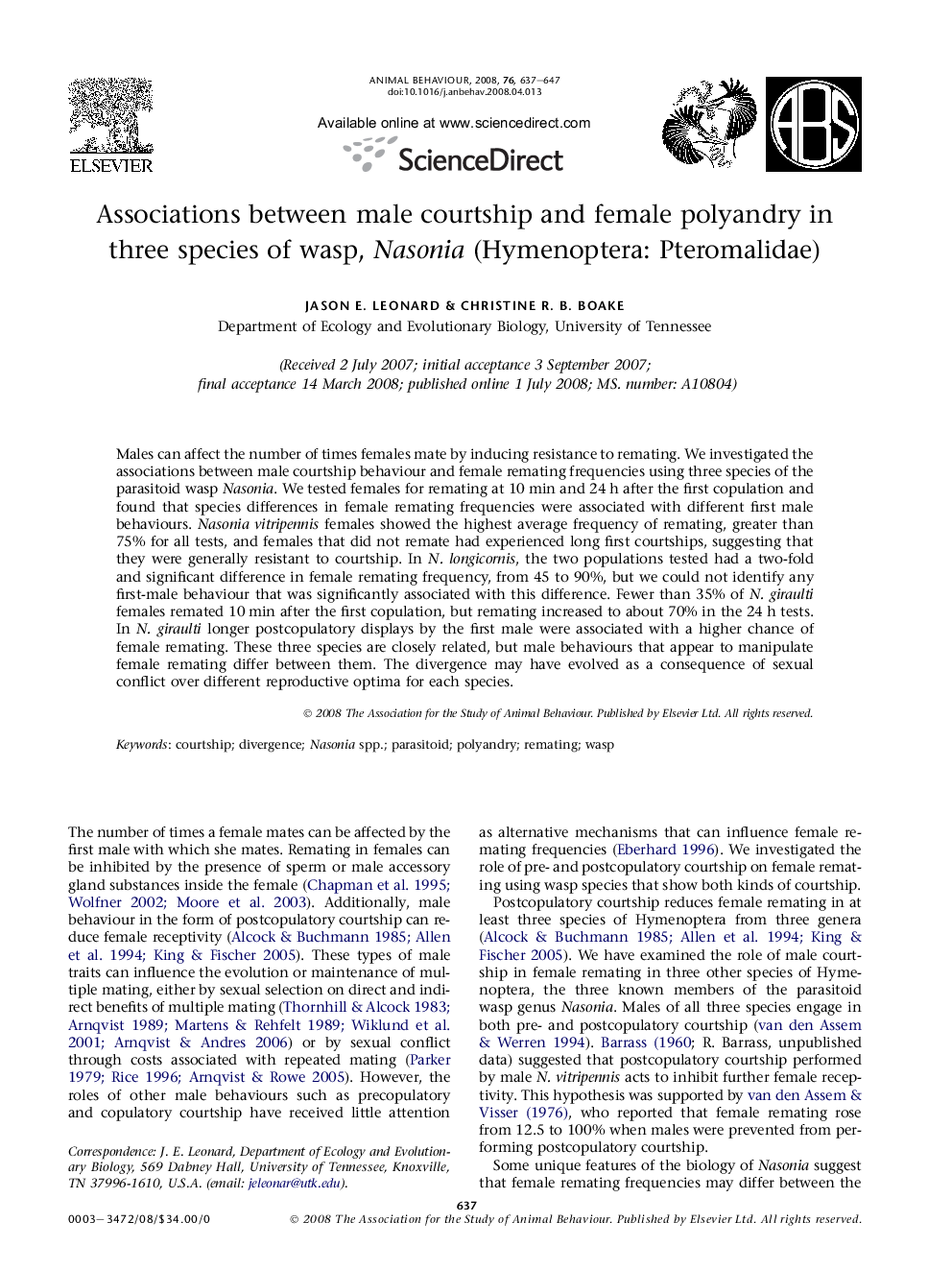| Article ID | Journal | Published Year | Pages | File Type |
|---|---|---|---|---|
| 2418809 | Animal Behaviour | 2008 | 11 Pages |
Males can affect the number of times females mate by inducing resistance to remating. We investigated the associations between male courtship behaviour and female remating frequencies using three species of the parasitoid wasp Nasonia. We tested females for remating at 10 min and 24 h after the first copulation and found that species differences in female remating frequencies were associated with different first male behaviours. Nasonia vitripennis females showed the highest average frequency of remating, greater than 75% for all tests, and females that did not remate had experienced long first courtships, suggesting that they were generally resistant to courtship. In N. longicornis, the two populations tested had a two-fold and significant difference in female remating frequency, from 45 to 90%, but we could not identify any first-male behaviour that was significantly associated with this difference. Fewer than 35% of N. giraulti females remated 10 min after the first copulation, but remating increased to about 70% in the 24 h tests. In N. giraulti longer postcopulatory displays by the first male were associated with a higher chance of female remating. These three species are closely related, but male behaviours that appear to manipulate female remating differ between them. The divergence may have evolved as a consequence of sexual conflict over different reproductive optima for each species.
